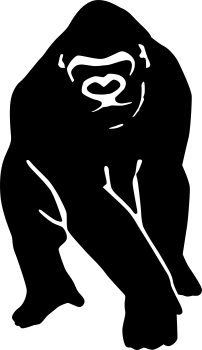| |
 From
a royal pleasure to the zoo with the greatest diversity of species in
the world From
a royal pleasure to the zoo with the greatest diversity of species in
the world
Founded in 1844, the
Zoo Berlin is the oldest zoo in Germany and the ninth oldest in the
world
Thanks to
King Frederick William III of Prussia: his great passion for exotic
animals laid the foundation for the Zoo Berlin. Together with his first
wife, Louise of Prussia, he established an impressive menagerie on the
romantic Pfaueninsel (‘Peacock Island’) from the beginning to the middle
of the 19th century that was also open to visitors. Peacocks, sheep and
bison, stags and pigs were soon joined by numerous birds as well as
mongooses, raccoons and even kangaroos, monkeys, coatis, and a peccary.
Many of the animal residents were gifts, but the king also acquired new
animals, for example purchasing large parts of the Grand Ducal menagerie
in Karlsruhe. After William’s death, his son, William IV, ascended to
the throne in 1840 and essentially inherited a private zoo, but he never
developed a real passion for it.
Lichtenstein’s day had come...
Martin
Hinrich Lichtenstein, who was the director of the zoological museum and
a professor at Berlin University at the time, had already been a royal
advisor to William III and was in charge of supervising its animal
population. He had already been pursuing the idea of founding a private
zoological garden for some time and saw this as his chance. Together
with the naturalist Alexander von Humboldt, and the landscape architect
Peter Joseph Lenné, he convinced the king to make his animals and some
of the buildings available for this project. The king then gifted his
pheasant house located in the Tiergarten park and the animals kept on
the Pfaueninsel to the people of Berlin. After three years of
construction, the Berlin Zoological Garden opened on 1 August 1844. The
beginnings, essentially managed on a voluntary basis by Hinrichs,
Humboldt, and Lenné, are generally regarded as onerous and not
particularly successful. As a result, the zoo went public in 1845. It
has remained a public holding company until this day and is mostly
privately owned.
 Two
Cologne natives in Berlin: Thriving growth under Bodinus and Heck Two
Cologne natives in Berlin: Thriving growth under Bodinus and Heck
In 1869, Dr
Heinrich Bodinus, previously the director of the Cologne Zoological
Garden, took over the helm of the park and ushered in an upward trend.
By issuing
new stock, he raised the capital to pursue a modern concept: to exhibit
more animal species, construct music pavilions, terraces and a
restaurant for entertainment, and build new, exotically styled houses.
Attendance and revenue increased considerably.
Bodinus died
in 1884. The director of Frankfurt Zoo, Dr Maximilian Schmidt, succeeded
him, but died only four years later. Schmidt is credited with
establishing orderly accounting processes as well as recruiting a staff
of craftspeople.
Next to
Bodinus, however, it was Ludwig Heck who really left a mark on the zoo.
Heck, who, like Bodinus, had previously been the director of the Cologne
Zoo, managed the park after Schmidt's death from 1888 to 1931. At only
28 years of age, he took charge of the legacy and shepherded the Zoo
Berlin to become one of the zoos with the greatest diversity of species
in the world. Heck is credited with significant breeding successes with
Asian elephants, orangutans and chimpanzees.
These golden
years under Bodinus and Heck saw the construction of the famous elephant
portal on Budapester Straße as well as the antelope house, the elephant
house, the ostrich house, the monkey palm house, and the large predator
house.
In 1913,
under Heck's leadership, the aquarium designed by behavioural scientist
Oskar Heinroth was opened to the public.
In 1932,
Ludwig Heck placed the Zoo Berlin in the hands of his son, Dr Lutz Heck.
Heck junior
modernised the park yet again, had bars built into the trenches and
constructed lavish outdoor enclosures using natural stone. The monkey
rock, lion grasslands, and rock enclosures for brown bears, wolves,
ibexes, etc. were built during this time.
Destruction, rebuilding, breeding successes
In 1939, the
Zoo Berlin counted over 4,000 animals belonging to 1,400 species – 91
animals survived.
The bombing
raids in 1943 and 1944 and even the final battles almost completely
destroyed what had grown into an impressive success story over the past
100 years. Zookeepers looked after all the surviving animals with
selfless devotion. 91 were reported to have survived, including the
popular hippopotamus bull Knautschke, the elephant bull Siam, and the
chimpanzee empress Suse.
As the first
female zoo director in Germany, Dr Katharina Heinroth took on the
difficult task of rebuilding the destroyed zoo from the rubble. The
aquarium that her husband Oskar Heinroth had originally designed was
restored and the antelope house was brought back to life. The elephant
house and the hippo house were completely rebuilt thanks to her
commitment.
The dedicated
director retired in 1956. She was succeeded by Dr Heinz-Georg Klös,
previously the director of the Osnabrück Zoo. Many of today’s enclosures
and buildings date back to his tenure, for example the monkey houses,
bear enclosures, and the predator house with a nocturnal animal section.
Besides the
faithful reconstruction of architecturally significant buildings such as
the elephant gate, Klös’s primary focus was on species conservation.
With his breeding successes, he laid the groundwork for many currently
successful groups such as the rare black rhinoceroses, Przewalski’s
horses or white-lipped peccaries. Furthermore, he founded the zoo
school. Dr Klös retired in 1991.
 One
city, two zoos One
city, two zoos
As a result
of the partition of Germany, the GDR opened its ‘own zoo’ in 1955, the
Tierpark Berlin under director Heinrich Dath, which is now the largest
landscape zoo in Europe.
Consequently,
there were two zoos in Berlin after Reunification, each with its own
unique characteristics and strengths. It was quickly agreed to establish
a close cooperation between the parks, which has lasted until today and
will be even further intensified in the future.
Dr Hans
Frädrich, who had been Klös’s deputy, managed the Zoo Berlin following
Reunification from 1991 to 2002. Under his tenure, the futuristic hippo
house and the penguin and seal enclosures were constructed.
He was
succeeded for five years by Dr Jürgen Lange, who had previously expanded
and managed the Berlin Aquarium for a quarter-century. The nocturnal
animal house was redesigned under the direction of Dr Lange. In 2007, Dr
Bernd Blaszkiewitz took over, who had already been the director of the
Tierpark Friedrichsfelde since 1991.
Blaszkiewitz
was the first director to be put in charge of the Zoo, the Aquarium, and
the Tierpark. In 2008, Gabriele Thöne became the commercial director of
the incorporated Zoo AG and the managing director of the subsidiary
Tierpark Berlin GmbH alongside Blaszkiewitz. In those years, the
chimpanzee enclosure was redesigned, and the open gorilla enclosure, the
new orangutan enclosure, and the bird house were opened within the zoo.
In September 2013, Gabriele Thöne retired from her office.
Modernisation 2.0 - Future-oriented concepts for the Zoo and the
Tierpark Berlin
In 2014, Dr
Andreas Knieriem took on the job of making the Zoo, the Aquarium, and
the Tierpark fit for the future. On 19 September 2013, the board of
directors of the Zoologischer Garten Berlin AG announced Knieriem’s
appointment to succeed the parting director Dr Bernhard Blaszkiewitz,
making him the sole director for both institutions.
Knieriem was
one of the leading heads instrumental in the restructuring and
conception of the Hanover Adventure Zoo as well as Hellabrunn Zoo, where
he was the director and sole chairman until his move to Berlin. He is
committed to the fight for nature and species conservation and wants to
convey his enthusiasm to the public. Accordingly, Knieriem advocates for
an interaction between humans and animals that reflects modern
sensibilities. He is currently working with an interdisciplinary team to
plan the goals and development for the Zoo and the Tierpark until the
year 2030.
Source: official site of Zoo
Berlin (2016)
|
|

